17.1. Probabilities and Expectations#
See More
A function
If you think of
Think of probabilities as volumes under the surface, and define
That is, the chance that the random point
This is a two-dimensional analog of the fact that probabilities involving a single continuous random variable can be thought of as areas under the density curve.
Quick Check
Random variables
(i) Could be any non-negative number
(ii) Has to be in
(iii) Has to be in
(iv) None of the above
Answer
(ii)
See More
17.1.1. Infinitesimals#
Also analogous is the interpretation of the joint density as part of the calculation of the probability of an infinitesimal region.
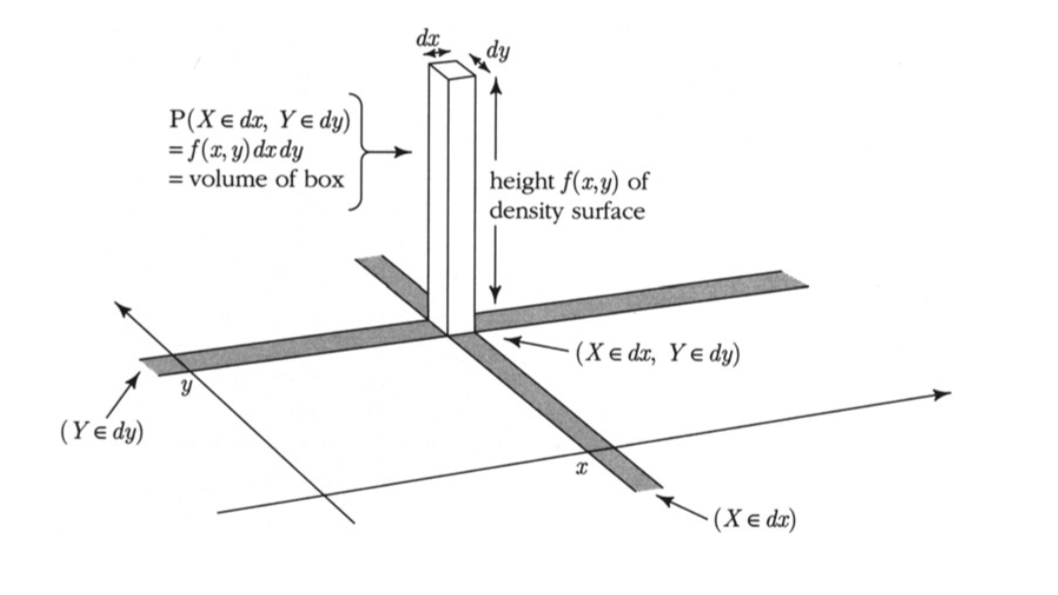 The infinitesimal region is a tiny rectangle in the plane just around the point
The infinitesimal region is a tiny rectangle in the plane just around the point
Thus for all
and the joint density measures probability per unit area:
An example will help us visualize all this. Let
For now, just assume that this is a joint density, that is, it integrates to 1. Let’s first take a look at what the surface looks like.
17.1.2. Plotting the Surface#
To do this, we will use a 3-dimensional plotting routine. First, we define the joint density function. For use in our plotting routine, this function must take
def joint(x,y):
if y < x:
return 0
else:
return 120 * x * (y-x) * (1-y)
Now we will call Plot_3d to plot the surface. The arguments are the limits on the rstride and cstride that determine how many grid lines to use. Larger numbers correspond to less frequent grid lines.
Plot_3d(x_limits=(0,1), y_limits=(0,1), f=joint, cstride=4, rstride=4)
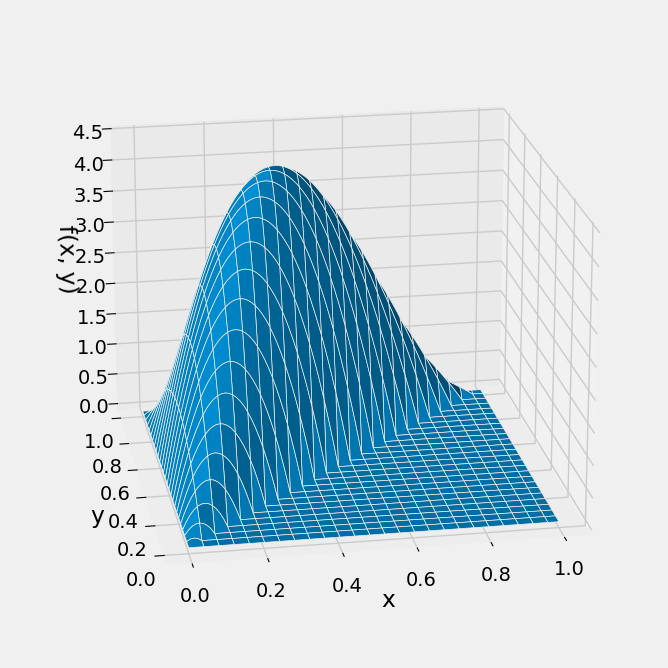
The surface has level 0 in the lower right hand triangle because it is not possible for the point
The possible values of
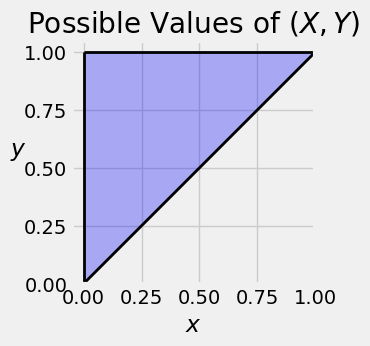
See More
17.1.3. The Total Volume Under the Surface#
The function
To set up the double integral over the entire region of possible values, notice that for each fixed value of
We will first fix
17.1.3.1. By SymPy#
To use SymPy we must create two symbolic variables. As our variables are positive, we can specify that as well. Then we can assign the expression that defines the function to the name f. This specification doesn’t say that
x = Symbol('x', positive=True)
y = Symbol('y', positive=True)
f = 120*x*(y-x)*(1-y)
f

Displaying the double integral requires a call to Integral that specifies the inner integral first and then the outer. The call says:
The function being integrated is
The inner integral is over the variable
The outer integral is over the variable
Integral(f, (x, 0, y), (y, 0, 1))

To evaluate the integral, use doit():
Integral(f, (x, 0, y), (y, 0, 1)).doit()

Quick Check
For
Answer
See More
17.1.4. Probabilities as Volumes#
Probabilities are volumes under the joint density surface. In other words, they are double integrals of the function SymPy.
17.1.5. Example 1#
Suppose you want to find
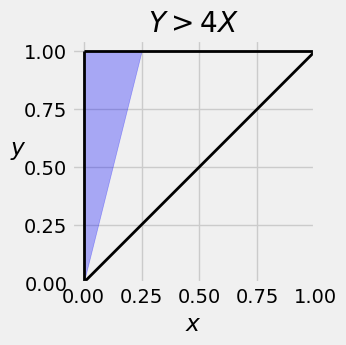
To find the region of integration, notice that for fixed
17.1.5.1. By SymPy#
Integral(f, (x, 0, y/4), (y, 0, 1))

Integral(f, (x, 0, y/4), (y, 0, 1)).doit()

5/32

17.1.6. Example 2#
Suppose you want to find
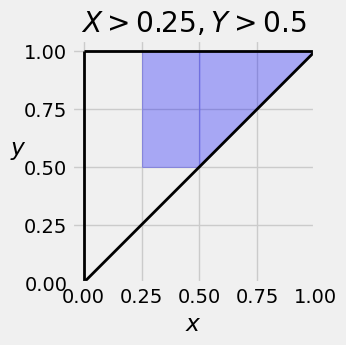
Now
You can crank that out by hand or use SymPy.
Integral(f, (x, 0.25, y), (y, 0.5, 1))

Integral(f, (x, 0.25, y), (y, 0.5, 1)).doit()

See More
17.1.7. Expectation#
Let
provided the integral exists, in which case it can be carried out in either order:
This is an application of the non-linear function rule for expectation, applied to two random variables with a joint density.
As an example, let’s find
Here
17.1.7.1. By SymPy#
Remember that x and y have already been defined as symbolic variables that are positive.
ev_y_over_x = Integral((y/x)*f, (x, 0, y), (y, 0, 1))
ev_y_over_x

ev_y_over_x.doit()


